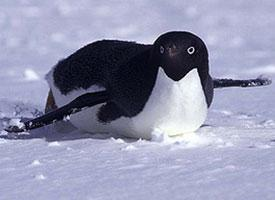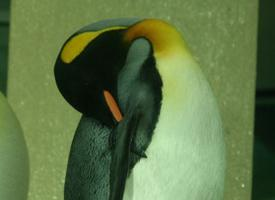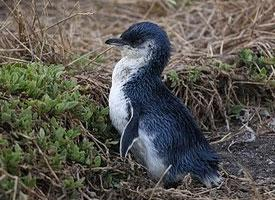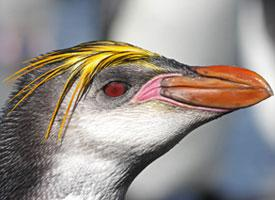
Váhy a míry
| Výška v kohoutku | od 30 do 50 cm |
|---|---|
| Hmotnost | 5 kg |
Popis zvířete
The Adélie penguin (Pygoscelis adeliae) is a species of penguin unique to the Antarctic coastlines, embodying the classic penguin image with its distinct black and white plumage. Named after Adélie Land in Antarctica, which itself was named after the wife of French explorer Jules Dumont d'Urville, these birds are among the southernmost distributed of all seabirds, alongside the emperor penguin.Physical Description:
Adélie penguins are medium-sized birds, typically measuring about 46 to 71 cm (18 to 28 inches) in height and weighing between 3.6 to 6 kg (7.9 to 13.2 pounds). They have a streamlined body shape, essential for their aquatic lifestyle. Their plumage is sharply delineated between the jet-black head and back and the stark white front, a countershading adaptation that provides camouflage from predators both above and below in the water. The birds have a distinctive white ring around the eye and a bill that is more slender and pointed than that of other penguin species, colored black with a distinct pinkish gape at the base during breeding season. Their strong, pinkish feet are well adapted to their environment, aiding in propulsion through water and maneuvering on land.
Habitat and Distribution:
Adélie penguins are true Antarctic residents. They inhabit the rocky, ice-free shores around the Antarctic continent, particularly during the breeding season. They are highly adapted to life in cold environments and are found in a range of habitats from the coast to the open sea. In winter, they can be found further north but still within the Antarctic and sub-Antarctic regions, often on the pack ice.
Behavior and Ecology:
Adélie penguins are highly social birds, forming large colonies that can number in the thousands during the breeding season. These colonies are noisy, bustling places, with birds constantly coming and going, feeding, nesting, and raising their young. They are strong swimmers, capable of reaching speeds of up to 45 km/h (28 mph) in pursuit of their prey, which consists mainly of krill, though they also eat fish and squid.
Breeding:
The breeding season begins in October when the Antarctic spring brings warmer temperatures. Adélie penguins return to the same nesting sites year after year, where they build nests from stones. Males arrive first to claim the best nesting sites and attract a mate. After laying two eggs, both parents share the responsibility of incubation, taking turns to keep the eggs warm and going to sea to feed. After about 35 days, the eggs hatch, and the chicks are fed by regurgitation. By February, the chicks have fledged but often remain close to their parents and the safety of the colony.
Conservation Status:
The Adélie penguin is currently classified as Near Threatened by the International Union for Conservation of Nature (IUCN). While they are protected under the Antarctic Treaty System, which regulates international relations with respect to Antarctica, their populations are threatened by climate change, which impacts their sea ice habitat and food sources. Additionally, human activities such as fishing and pollution pose threats to their survival.
In conclusion, the Adélie penguin is a remarkable species, uniquely adapted to life in one of the world's harshest environments. Its behavior, ecology, and the challenges it faces highlight the interconnectedness of Antarctic ecosystems and the importance of ongoing conservation efforts to protect these charismatic birds and their habitat.
Podobná zvířata
Nové fotografie zvířat
Top 10 zvířat
- Chinese water dragon (Physignathus cocincinus)
- Galápagos tortoise (Geochelone nigra complex)
- Dolphin gull (Leucophaeus scoresbii)
- Japanese macaque (Macaca fuscata)
- Colombian red howler (Alouatta seniculus)
- Sea urchins (Echinoidea)
- Moustached guenon (Cercopithecus cephus)
- Diana monkey (Cercopithecus diana)
- Common reed warbler (Acrocephalus scirpaceus)
- Common house mosquito (Culex pipiens)


